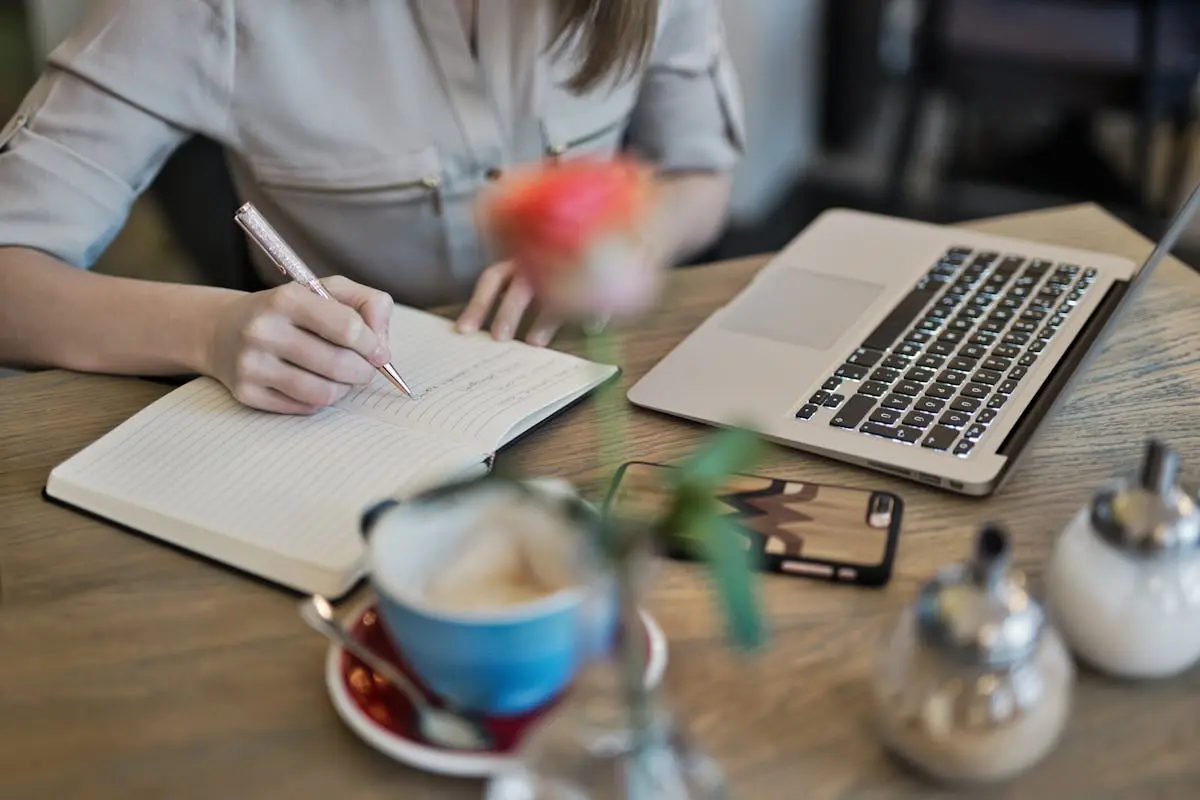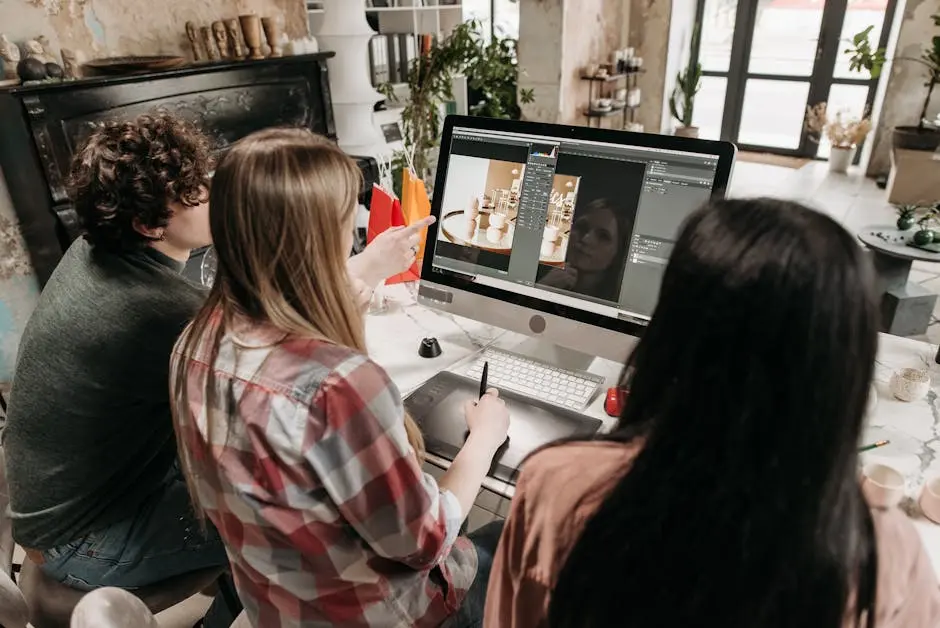7 Ways to Boost Productivity for Graphic Designers

Being a graphic designer is all about creativity and innovation, but it can also demand juggling multiple tasks at once. If you've been looking to supercharge your productivity without sacrificing your creative flair, you're in the right place. In this post, we'll explore practical and effective ways to boost your productivity and keep your creativity flowing effortlessly.
1. Optimizing Your Workspace Environment
A well-organized space can have a significant impact on your ability to focus and get things done. Begin by assessing your current workspace and identify elements that contribute to clutter or distraction. Consider a digital detox—streamlining your work area by minimizing unnecessary gadgets and paperwork. An effective way to boost this is by adopting a clean desk policy, where you only keep essential tools within reach. Incorporating touches of nature, like a small plant, can also enhance your mood and productivity. Rearrange your office to achieve the ideal lighting, as natural light significantly influences creativity by keeping you alert and energized throughout the day.
Invest in ergonomic furniture that promotes comfort during long working hours. A comfortable chair and desk that cater to your height and posture can prevent strain, allowing for prolonged focus. Establish different zones in your workspace for various tasks—such as a dedicated area for brainstorming or sketching. This can subconsciously train your mind to gear up for specific activities. Learn more about creating a functional workspace environment with our tips on how to set up your workspace.
2. Mastering the Art of Time Management
Time management is key to maximizing productivity. One effective method to consider is the Pomodoro Technique, which involves working in shorter, intense bursts followed by brief breaks. This technique can help maintain your concentration levels while minimizing fatigue. Additionally, prioritize creating a detailed daily schedule or to-do list to keep track of tasks and deadlines, ensuring important tasks do not fall through the cracks. Calendars, whether physical or digital, can visually organize your day, providing structure to your workflow.
Technology offers a wide array of tools designed to aid in time management. Applications like Trello or Asana can facilitate project management, allowing you to visually track progress and collaborate with team members effectively. Implement reminders or alarms to alert you to task switchings, prompting you to transition smoothly from one activity to the next without lingering in one task for too long. By managing time efficiently, you'll find yourself achieving more without the constant pressure of time running out. Check out our recommended effective time management tools to streamline your workflow.
3. Utilizing Essential Design Tools
Having the right tools can make all the difference. Dive into the essential software and resources that every graphic designer should consider for a smoother workflow. Primarily, Adobe Creative Suite reigns supreme in the graphic design world, offering software such as Photoshop, Illustrator, and InDesign, each catering to different designing needs. However, the landscape is rich with alternatives that can equally enhance your skill set, including platforms like Canva for fast and intuitive design work or Sketch for those focusing on UI/UX projects.
Hardware complements software in creating a seamless experience. Investing in a quality graphic tablet can drastically enhance your precision and speed, especially for professional digital artwork. Additionally, rely on extensive design libraries like Envato Elements, which provide vast resources from templates to fonts that can save time during project execution. Explore how to integrate these tools into your daily designs with our comprehensive guide on essential design software.
4. Setting Clear and Achievable Goals
Goal-setting is crucial for maintaining direction and focus. Start by defining your long-term vision as a designer, then break it down into achievable short-term objectives. These smaller milestones not only make your main goal less daunting but also provide regular opportunities for celebration as you accomplish them. Utilize the SMART criteria—making sure each goal is Specific, Measurable, Achievable, Relevant, and Time-bound. This structured approach allows for tangible tracking of progress and helps maintain motivation.
It's important to remain flexible with your goals. Design projects can be unpredictable, so regularly reassess your objectives to ensure they align with evolving priorities and feedback. Sharing goals with peers or mentors can offer accountability and encouragement, providing an external perspective that might highlight overlooked areas. By setting realistic targets, you'll enhance your productivity while safeguarding against frustration and burnout. For more insights, discover our strategies for setting achievable design goals.
5. Implementing Regular Breaks for Better Focus
Taking breaks might seem counterintuitive, but regular intervals can actually enhance your focus and creativity. Scientific evidence supports the idea that the human brain can effectively concentrate for specific periods before requiring downtime to recharge. Techniques like the aforementioned Pomodoro Technique, where short bursts of intense focus are interspersed with breaks, have shown significant improvements in productivity and mental acuity.
Physical activity during breaks can significantly impact productivity. Simple exercises such as stretching or a brisk walk can energize your body and mind. Additionally, stepping away from the screen to engage in other activities like listening to music, meditating, or simply enjoying a snack can provide much-needed mental relief. Learn how to optimize your schedule with our tips on taking effective breaks.
6. Staying Inspired and Avoiding Burnout
Staying inspired is essential for any graphic designer, as creativity thrives on new ideas and perspectives. Regularly exposing yourself to diverse art forms, whether online galleries, art shows, or design blogs, can ignite that spark within you. Joining creative forums or social media groups where you can share your work and receive feedback can also provide fresh insights and drive.
Avoiding burnout is crucial in preserving your passion for design. Balance your workload by taking on projects that truly excite and challenge you, while remembering to allocate time for rest and personal pursuits. Pursuing hobbies outside of design, like reading or hiking, offers a retreat from the digital world, providing perspective and inspiration. Incorporating self-care practices will help you maintain a sustainable creative practice, preventing exhaustion and ensuring longevity in your career. For more suggestions, explore our tips on staying creatively inspired.
7. Connecting and Collaborating with Community
Networking with other designers can open up new avenues for creativity. Participating in forums, attending workshops, and joining design communities can introduce you to different perspectives, techniques, and trends. Not only does this foster professional growth, but it also nurtures a sense of belonging within a broader community of creatives. Collaborations can spur creativity by blending different styles and expertise, producing innovative results.
Seek opportunities for collaboration with designers whose work you admire. Joint projects can refine your skills and challenge you to think outside your usual scope. Regularly engaging with peers enhances your visibility within the industry, leading to potential career advancement opportunities. Embrace the chance to contribute your unique voice to a larger conversation. Learn the benefits of community engagement with our guide to collaborating and connecting.
Roam: Run your design business, not just your projects. Intuitive business management tools for graphic designers.


.png)





